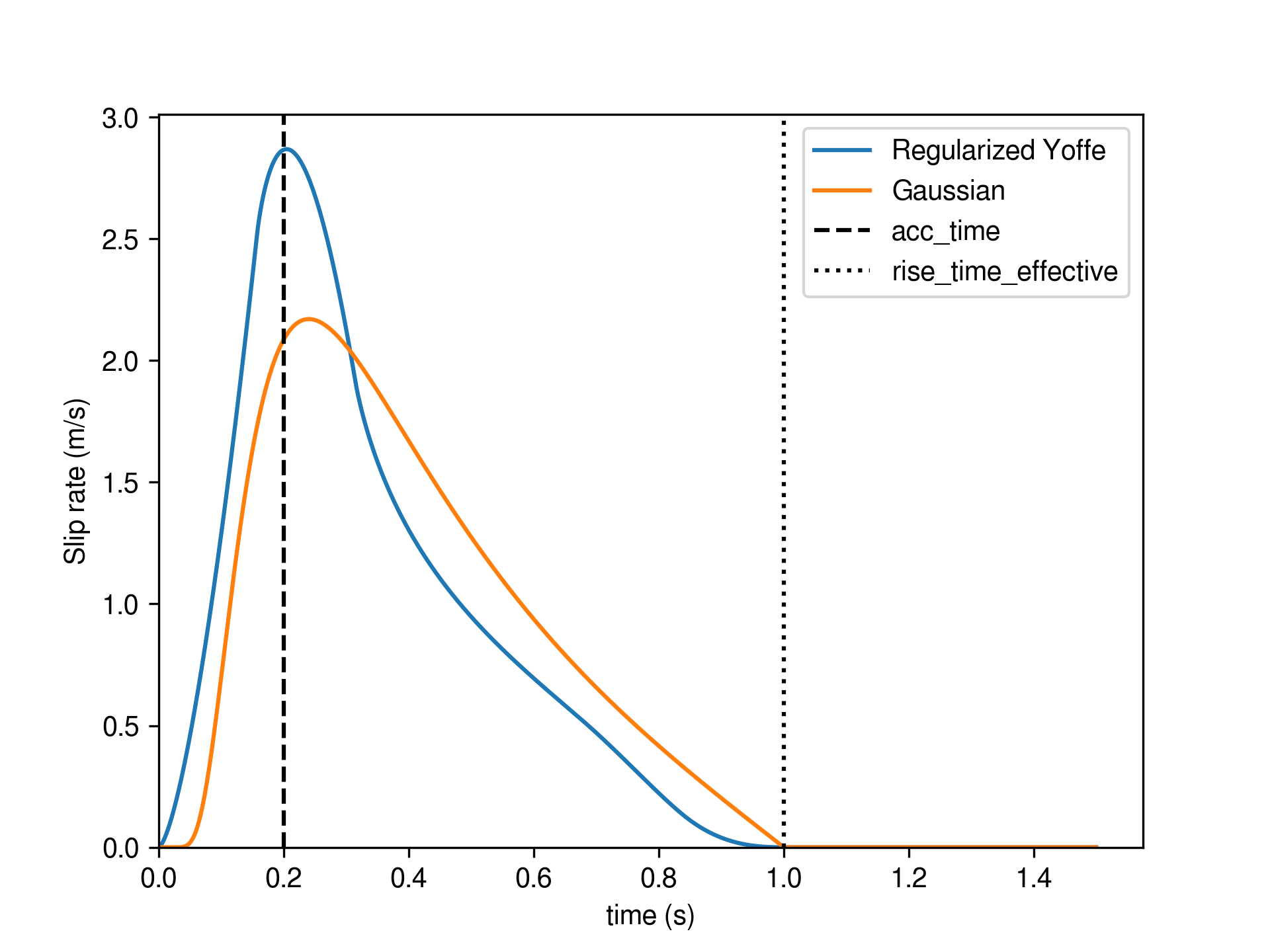Slip-rate imposed on a DR boundary
This “pseudo” friction law allows imposing slip-rate of a kinematic source model as a boundary condition on a fault plane. This implentation is equivalent to the approach used e.g. in Tinti et al. (2005, https://agupubs.onlinelibrary.wiley.com/doi/10.1029/2005JB003644) and Causse et al. (2014, https://academic.oup.com/gji/article/196/3/1754/583512#9427920).
The advantage of this approach is that the displacement discontinuity can be accurately represented in SeisSol’s discontinuous finite element space. A multi point-source representation, in comparison, may give rise to spurious waves due the continuity of the basis functions within a finite element (smearing), and to the discrete spatial sampling between point sources (aliasing).
The current implementation allows either imposing kinematic models parameterized by regularized Yoffe functions (FL=33, see Tinti et al., 2005, https://doi.org/10.1785/0120040177) or by Gaussian source time functions (FL=34).

Shape of a regularized Yoffe function (blue) and a Gaussian source time function (orange). We here use rupture_onset=0, acc_time=0.2 and effective_rise_time=1.0.
The Yoffe functions are parametrized by rupture_onset, tau_S and tau_R, where rupture_onset is the onset time of the rupture,
tau_S is a parameter closely related (see hereafter) with T_acc, the duration of the positive slip acceleration (time to the peak slip-rate),
and tau_R is a parameter that, in combination with tau_S, allow defining the effective duration of slip tau^eff_R.
For typical tau_S/tau_R ratio, we can assume T_acc = 1.27 tau_S. Yet, the factor can range from about 1.15 (for tau_S/tau_R close to 0) to about 1.4 (for tau_S/tau_R close to 0.4).
In addition, we can typically assume tau^eff_R = tau_R + 2 tau_S.
Note that in the code, we apply tau_R = max(tau_R, tau_S) to ensure that tau_R >= tau_S (the contrary could occur after interpolation from ASAGI).
The Gaussian source time functions are parametrized by rupture_onset and rupture_rise_time.
The slip distribution is defined by the strike_slip and dip_slip variables.
All these parameters are read by easi from the dynamic rupture yaml file.
- Warning:
the direction of positive
strike_slipanddip_slipis based on the convention of Seissol (e.g. positive strike_slip for right-lateral faulting).Select SlipRateOutputType=0 in the parameter file to calculate slip-rate output properly.
A fully working example based on Northridge is given at https://github.com/SeisSol/Examples/tree/master/Northridge_FL33.
Note that the yaml and netcdf files describing the kinematic model parameters, and the ts file describing the fault geometry are automatically generated by this script.
Misfits information printed by this script can help choosing the best threshold value (see option --PSRthreshold) and which of the Yoffe or Gaussian source time function to use.